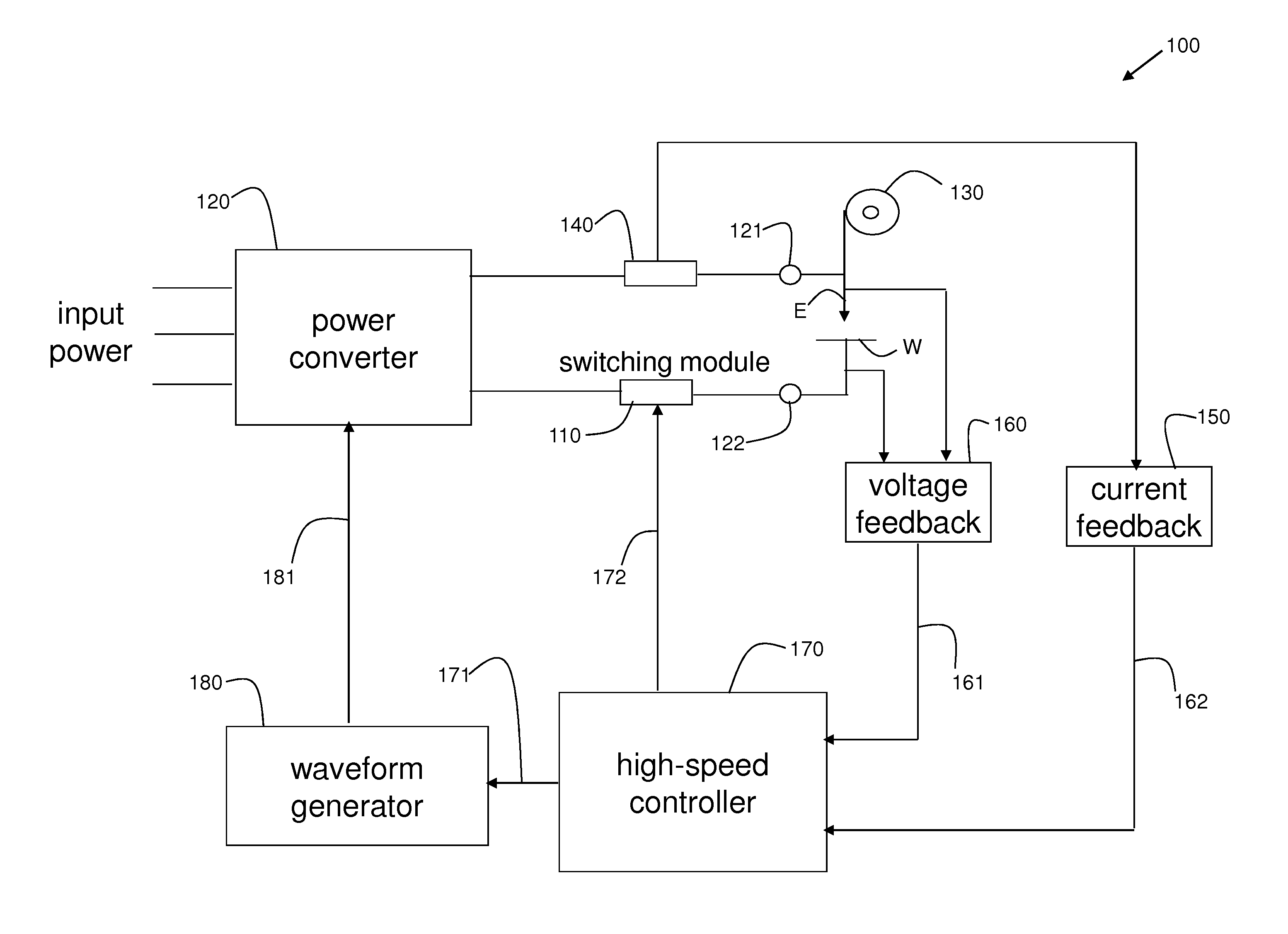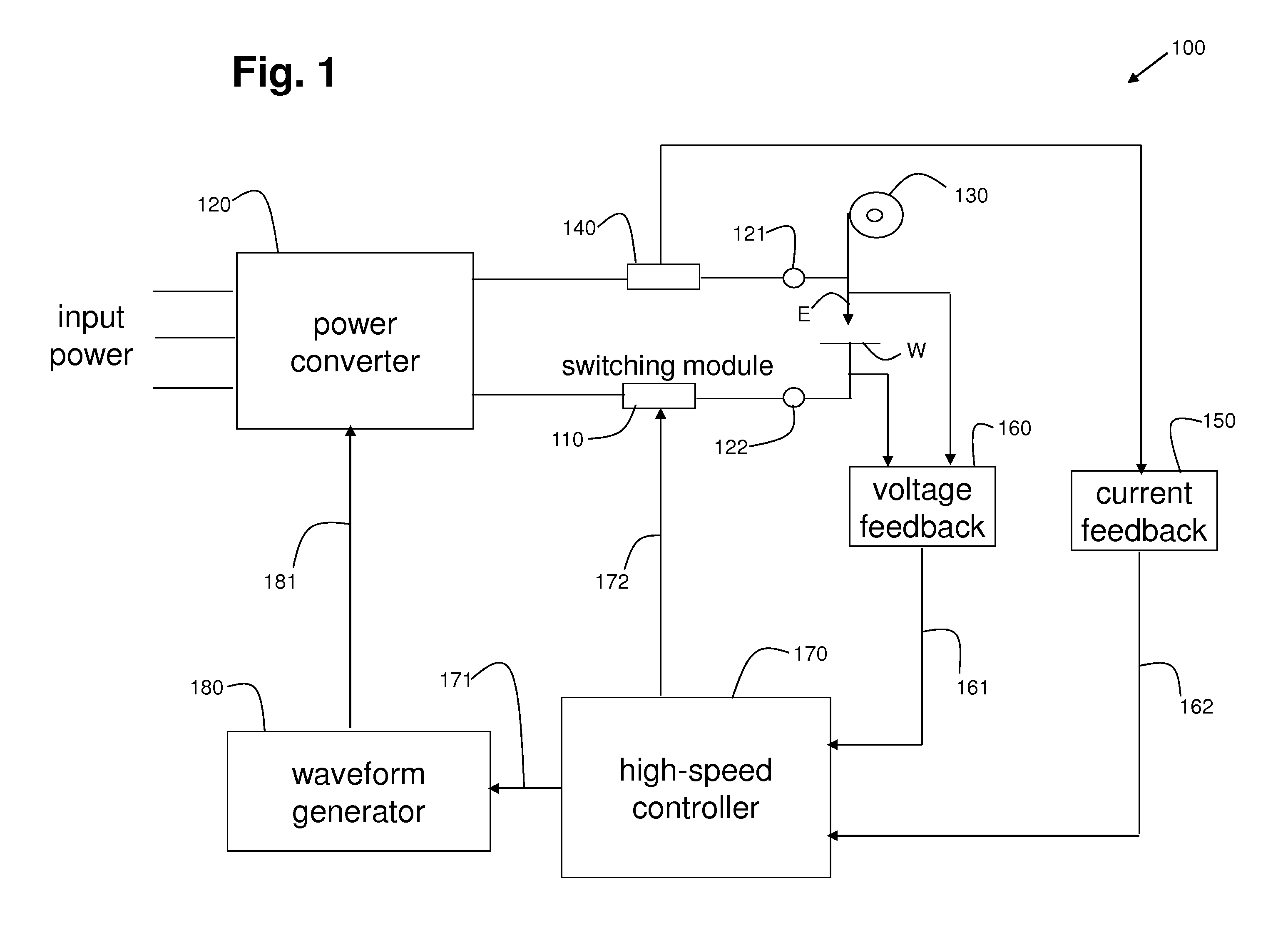Method to control an arc welding system to reduce spatter
a technology of arc welding and control method, which is applied in the direction of arc welding apparatus, welding apparatus, manufacturing tools, etc., can solve the problem of lower welding current than it is otherwise, and achieve the effect of reducing spatter, reducing spatter, and reducing welding output curren
- Summary
- Abstract
- Description
- Claims
- Application Information
AI Technical Summary
Benefits of technology
Problems solved by technology
Method used
Image
Examples
Embodiment Construction
[0018]During an arc-welding process, when the distance between the tip of the electrode and the workpiece is relatively small, molten metal may be transferred via a contact transfer process (e.g., a surface-tension-transfer or STT process) or a free-flight transfer process (e.g., a pulsed welding process) with a tethered connection. In a contact transfer process, a molten metal ball on the tip of the welding electrode makes contact with the workpiece (i.e., shorts) and starts to “wet into” the molten puddle on the workpiece before the molten metal ball begins to substantially separate from the tip of the electrode.
[0019]In a free-flight transfer process, the molten metal ball breaks free of the tip of the electrode and “flies” across the arc toward the workpiece. However, when the distance between the tip of the electrode and the workpiece is relatively short, the molten metal ball flying across the arc can make contact with the workpiece (i.e., short) while a thin tether of molten ...
PUM
| Property | Measurement | Unit |
|---|---|---|
| resistance | aaaaa | aaaaa |
| electrical | aaaaa | aaaaa |
| current | aaaaa | aaaaa |
Abstract
Description
Claims
Application Information
 Login to View More
Login to View More - R&D
- Intellectual Property
- Life Sciences
- Materials
- Tech Scout
- Unparalleled Data Quality
- Higher Quality Content
- 60% Fewer Hallucinations
Browse by: Latest US Patents, China's latest patents, Technical Efficacy Thesaurus, Application Domain, Technology Topic, Popular Technical Reports.
© 2025 PatSnap. All rights reserved.Legal|Privacy policy|Modern Slavery Act Transparency Statement|Sitemap|About US| Contact US: help@patsnap.com



